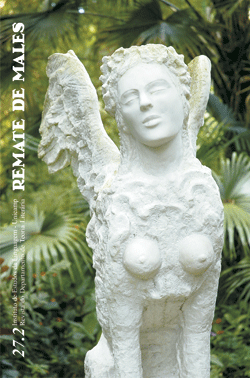Resumo
The following text analyses the play The Night Birds, by Hilda Hilst, whose action, set at the concentration camp in Auschwitz, focuses on prisoners from different origins held till their death in a concrete cell, with the Priest Maximilian Kolbe. The play dates from 1968, when Brazil is under a military dictatorship; the reference to Auschwitz can thus, as I see it, be also understood as hinting at the political situation in Brazil, through the use of an allegory based on a double reference structure, that points to terrible events that plague a clearly asymmetrical world of aggressors and victims, and from which coherence, order, and logic have been subtracted. A lyric intensification that explodes in extreme situations and functions as an amplifying dynamo of despair and death runs through the whole text.Referências
AGAMBEN, Giorgio. Homo sacer, Belo Horizonte: ed. da UFMG, 2006.
AGAMBEN, Giorgio. Homo sacer. El poder soberano y la nuda vida, trad. de Antonio Gimeno, Valencia: Pre-Textos, 1998.
AMARAL, Maria Teresa. “Aves da Noite”, Última Hora, 16/09/1982.
BERKOVITS, Eliezer. With God in Hell – Judaism in the Ghettos and Deathcamps. Sanhedrin Press, New York, 1979. Gagnebin, Jeanne Marie. Lembrar escrever esquecer. São Paulo: editora 34, 2006.
GALLE, Helmut. “Sobre la representación del holocausto en el drama alemán. El callejón sin salida del teatro documental”, in: Teatro y Teoría Teatral y otros temas germanísticos (Actas de las XII Jornadas de la Asociación Argentina de germanístas) Facultad De Filosofía y Letras Universidad de Buenos Aires, 2003, pp.79-95.
HOCHHUT, Rolf. O vigário, tradução de João Alves dos Santos, São Paulo: Editorial Grijalbo, 1965.
LECROIX-RIZ, Annie. Le Vatican, L’Europe et le Reich de la première guerre mondiale à la guerre froide, Paris, Arman Colin, 1996.
LEVI, Primo. Os afogados e os sobreviventes. Os delitos, os castigos, as penas e as impunidades, trad. Luís Sérgio Henriques, São Paulo: Paz e Terra, 1990.
RAWET, Samuel. Contos e Novelas Reunidos, org. André Seffrin, Rio de Janeiro: Civilização Brasileira, 2004.
ROSENFELD, Anatol. “O teatro de Hilda Hilst”, in: “Suplemento Literário”, O Estado de S. Paulo, 21.01.1969.
SANTO AGOSTINHO, Os Pensadores (Confissões e De Magistro), São Paulo: Abril Cultural, 1973.
SELIGMANN-SILVA, Márcio. “Escrituras da Shoá no Brasil”. In Noah/Noaj, n.16-17 (Org Berta Waldman e Moacir Amâncio), São Paulo: Associação Editorial Humanitas, 2007, pp. 137-156.
SELIGMANN-SILVA, Márcio. “O testemunho: entre a ficção e o ‘real”, in: História, Memória, Literatura, org. Márcio Seligmann-Silva. Campinas: Editora Unicamp, 2003.
VINCENZO, Elza Cunha de. Um Teatro da Mulher, São Paulo, Edusp/Perspectiva, 1992.
WALDMAN, Berta. “La Shoá en la literatura brasileña: una pequeña gramática”. In Memoria y Representación: Configuraciones culturales y literarias en el imaginário judío latinoamericano. Ed. Ariana Huberman y Alejandro Meter. Rosario: Beatriz Viterbo Editora, 2006, pp. 103-123.
WIEVIORKA, Annette, Auschwitz expliqué à ma fille. Paris, Seuil, 1999.
YOUNG, James E. em seu livro Writing and Rewriting the Holocaust - Narrative and the Consequences of Interpretation, Bloomington and Indianopolis: Indiana University Press, 1990.

O periódico Remate de Males utiliza a licença do Creative Commons (CC), preservando assim, a integridade dos artigos em ambiente de acesso aberto.

